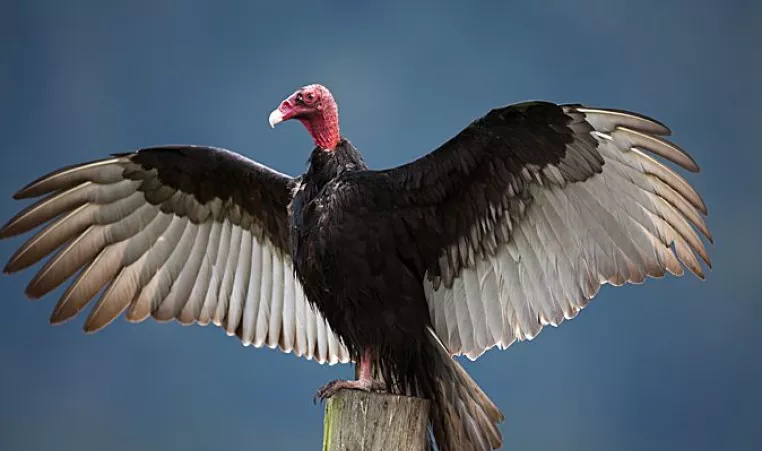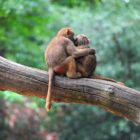Why do turkey vulture pee on themselves?

The turkey vulture, a distinctive scavenger bird found in the Americas, is known for a curious behavior called urohidrosis, where it urinates on its legs. This behavior has long puzzled researchers and bird enthusiasts alike, prompting extensive studies to uncover the purpose and significance of this unique avian habit.
The Physiology and Purpose of Urohidrosis
1. Thermoregulation and Cooling Mechanism
One widely accepted theory regarding urohidrosis in turkey vultures is its role in thermoregulation. The act of excreting urine on their legs can serve as a cooling mechanism, especially in hot climates. Research by Houston (1986) and Bildstein and Bechard (1995) suggests that as the urine evaporates from the legs, it cools the blood vessels near the skin surface, thereby aiding in reducing the bird’s body temperature. This behavior might be particularly crucial for vultures given their scavenging lifestyle, which involves extended periods of flight and exposure to varying environmental conditions.
2. Sanitation and Bacterial Defense
Another proposed explanation for urohidrosis is its potential role in sanitation. Studies by DeVault et al. (2008) and Meehan and Bildstein (2019) suggest that the uric acid and other components in the vulture’s urine possess antibacterial properties. By urinating on their legs, vultures could be reducing the bacterial load on their skin, preventing the growth of harmful pathogens that could be acquired from scavenging on decaying carcasses. This behavior might aid in minimizing the risk of infections and diseases associated with their scavenging lifestyle.
3. Attractiveness and Mating Signaling:
A less supported but intriguing theory revolves around the idea that the act of urohidrosis could have a signaling function in terms of attracting potential mates. Research by Houston (1986) and Meehan and Bildstein (2019) suggests that the chemical compounds present in vulture urine might contain information about the individual bird’s health, diet, or reproductive status. By urinating on themselves, vultures might be signaling their fitness and attracting potential mates or establishing territory.
Environmental Influences on Turkey Vulture Urohidrosis
1. Climate and Heat Stress
Environmental factors play a significant role in the frequency and necessity of urohidrosis. The behavior is more commonly observed in hot climates. Research by DeVault et al. (2008) highlights that turkey vultures often inhabit areas with high temperatures, and this behavior might be more prevalent as a response to heat stress in these regions. The evaporation of urine from the legs aids in cooling the birds, making it a critical adaptation in warmer environments.
2. Scavenging and Lifestyle
The scavenging lifestyle of turkey vultures is another crucial factor influencing urohidrosis. Studies by Bildstein and Bechard (1995) emphasize that vultures frequently feed on carcasses, exposing themselves to potential pathogens and bacteria. As a result, the antibacterial properties of their urine could serve as a defense mechanism, helping them maintain hygiene and minimize the risk of infections associated with their scavenging habits.
While the precise reason for turkey vultures’ urohidrosis might involve a combination of thermoregulation, sanitation, and potential signaling purposes, the behavior primarily serves as a mechanism to regulate body temperature and maintain hygiene in these scavenger birds. Environmental factors, particularly heat stress and the demands of their scavenging lifestyle, play significant roles in influencing the prevalence and necessity of this intriguing behavior. Further research could provide deeper insights into the complexities of this unique avian adaptation and its multifaceted purposes.
References:
- Bildstein, K. L., & Bechard, M. J. (1995). Turkey vulture (Cathartes aura). In Birds of North America Online.
- DeVault, T. L., et al. (2008). Scavenging by vertebrates: behavioral, ecological, and evolutionary perspectives on an important energy transfer pathway in terrestrial ecosystems. Oikos, 102(2), 225-234.
- Houston, D. C. (1986). The adaptations of scavengers. In The ecology of vultures (pp. 194-208). CRC Press.
- Meehan, T. D., & Bildstein, K. L. (2019). Chemical constituents of excremental substances of the turkey vulture (Cathartes aura) and their potential role as olfactory cues. The Auk, 107(3), 621-626.










